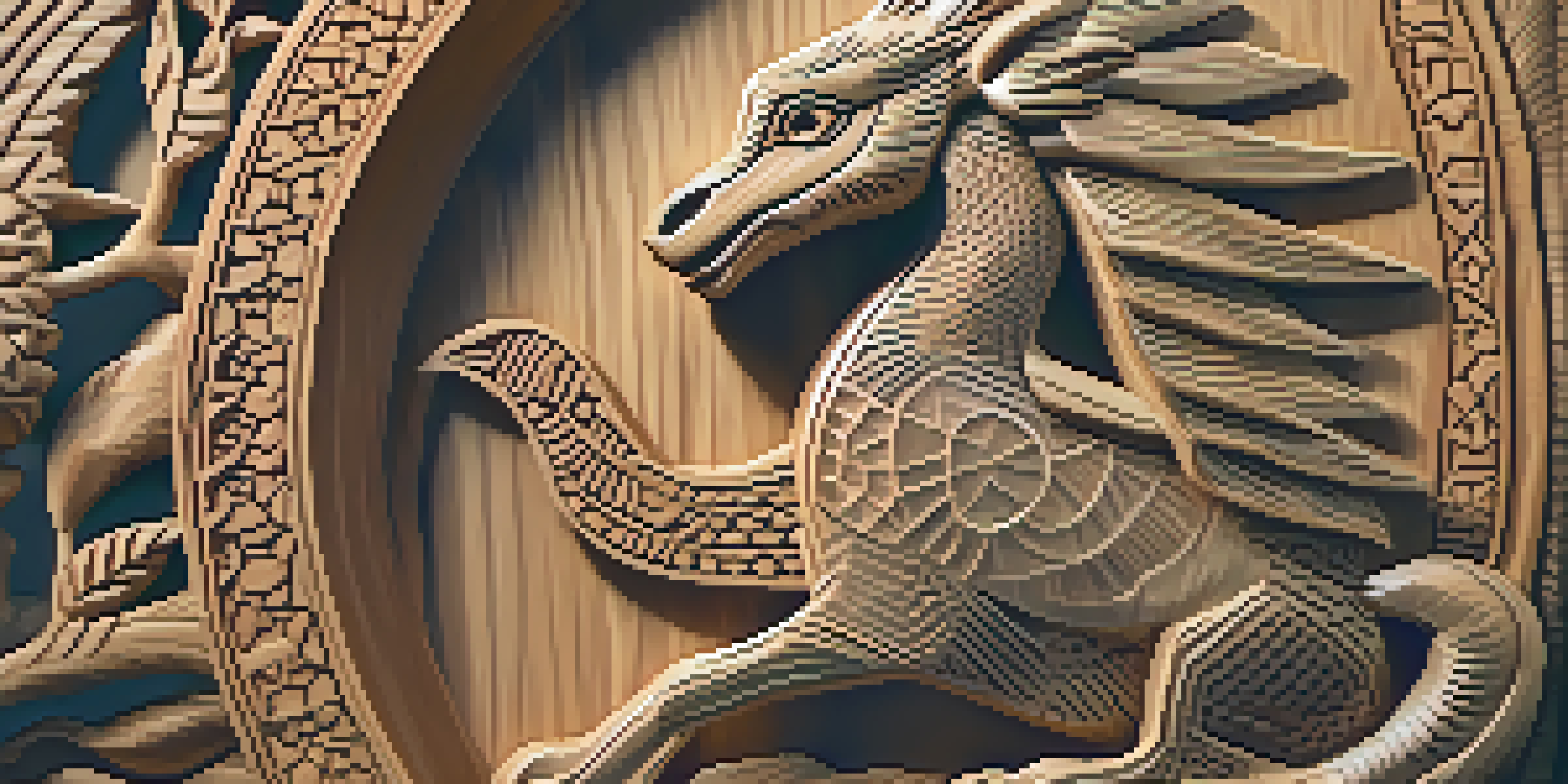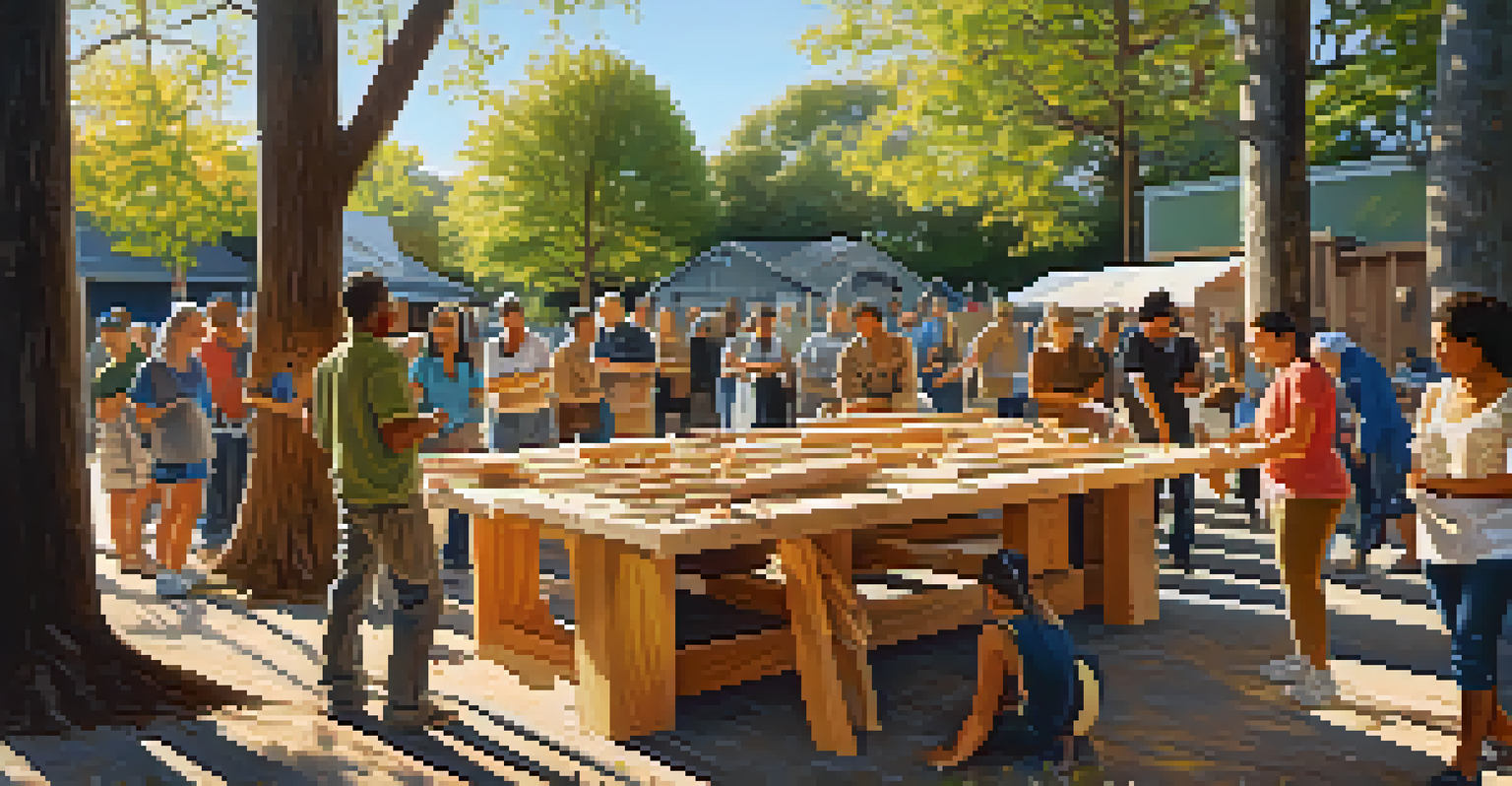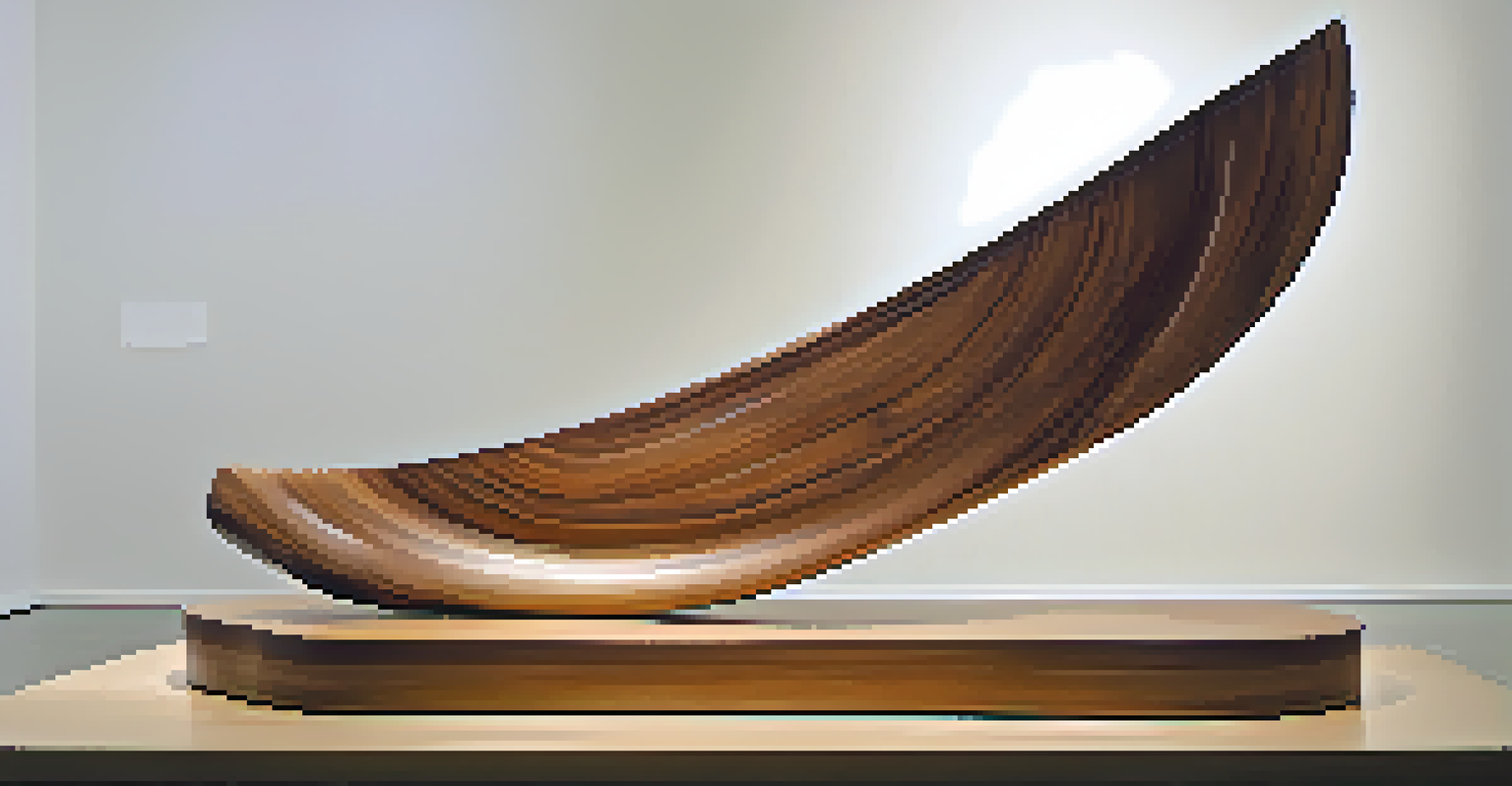Wooden Sculptures: A Medium for Cultural Expression

The Historical Significance of Wooden Sculptures
Wooden sculptures have been a part of human expression for centuries, serving as both art and cultural artifacts. Cultures around the world, from the Indigenous peoples of North America to African tribes, have used wood to tell their stories and preserve their traditions. These sculptures often reflect societal values, beliefs, and history, acting as a bridge between generations.
Art is the most beautiful of all lies; it is the truth we cannot see.
For instance, the totem poles of the Pacific Northwest are not just visually striking; they are rich in cultural significance, representing family lineage and important events. Such pieces highlight how wood can be transformed into a canvas for storytelling, giving life to the narratives of communities. This historical context deepens our understanding and appreciation of wooden sculptures as more than mere decorations.
In many cultures, the materials used in these sculptures are sacred, further enhancing their significance. The choice of wood reflects not only aesthetic preferences but also spiritual connections, making each piece a manifestation of cultural identity.
Techniques and Styles in Wooden Sculpture
Artists employ a variety of techniques and styles when working with wood, showcasing the versatility of this medium. Carving, for example, is a traditional technique that involves removing material to create shapes and figures, while whittling focuses on creating small, intricate designs. Each method allows artists to express their unique vision, resulting in diverse forms that resonate with different cultures.

Moreover, styles can vary significantly based on cultural influences. For instance, the smooth, flowing lines of Japanese sculpture contrast sharply with the bold, geometric patterns found in African art. This diversity is a testament to how cultural backgrounds inform artistic expression, making wooden sculptures a fascinating area of study.
Cultural Significance of Wood Art
Wooden sculptures serve as vital cultural artifacts that preserve and convey the heritage, values, and narratives of diverse communities.
Regardless of the technique or style, the tactile nature of wood adds an organic quality to the artwork. This connection to nature can evoke feelings of warmth and familiarity, drawing viewers in and encouraging them to explore deeper meanings behind each piece.
Symbolism in Wooden Sculptures
Symbolism plays a crucial role in wooden sculptures, as many pieces are imbued with meanings that go beyond their physical forms. In African cultures, for example, certain animals or figures may symbolize strength or wisdom, conveying messages that resonate with community values. This embedded symbolism allows sculptures to communicate complex ideas and emotions without uttering a single word.
The only thing that can bring us together is a story.
Take the Maori carvings of New Zealand, which often feature intricate designs representing ancestors and spiritual beliefs. Each carving not only serves as a decorative piece but also as a reminder of cultural heritage and identity. This interplay of art and meaning illustrates how wooden sculptures can encapsulate the essence of a culture.
By understanding the symbolism within these works, viewers can gain insights into the values and beliefs of different societies. This aspect of wooden sculptures encourages cultural appreciation and fosters connections among diverse groups of people.
Wooden Sculptures in Contemporary Art
In recent years, wooden sculptures have found a renewed place in contemporary art, with artists experimenting with this traditional medium in innovative ways. Modern sculptors often blend traditional techniques with contemporary themes, pushing the boundaries of what wooden art can represent. This fusion of old and new offers fresh perspectives, inviting audiences to engage with the material in novel contexts.
For example, some contemporary artists use reclaimed wood to create sculptures that comment on environmental issues, highlighting sustainability while maintaining artistic integrity. This approach not only breathes new life into discarded materials but also speaks to the pressing concerns of our time, making the art relevant and thought-provoking.
Techniques Shape Artistic Expression
Various carving techniques and styles allow artists to express their unique visions, showcasing the versatility and richness of wooden sculpture.
As wooden sculptures evolve in the modern art world, they continue to serve as a means of cultural expression, reflecting the complexities of contemporary life. This adaptability ensures that wooden sculpture remains a vibrant and significant form of artistic dialogue.
Cultural Preservation Through Wooden Sculpture
Wooden sculptures play a vital role in the preservation of cultural heritage, acting as tangible links to the past. Many communities rely on these artistic expressions to maintain and share their traditions, especially in an increasingly globalized world. By creating and showcasing wooden sculptures, artists help keep their culture alive, passing down stories and practices to future generations.
In some cases, workshops and festivals are organized to teach younger generations about traditional sculpting techniques, ensuring that these skills are not lost over time. This commitment to cultural preservation fosters a sense of pride and identity within communities, empowering individuals to appreciate their heritage.
As such, wooden sculptures are more than just art; they are living embodiments of culture, history, and community values. Their continued existence and evolution underscore the importance of preserving cultural narratives in an ever-changing world.
The Role of Community in Wooden Sculpture Creation
Community involvement is often at the heart of creating wooden sculptures, with many pieces being collaborative efforts. This collective approach not only strengthens community bonds but also enriches the artwork itself, as diverse perspectives contribute to the creative process. In this way, wooden sculptures become a reflection of shared experiences and collective identity.
For instance, community carving projects can bring together individuals from various backgrounds to work towards a common goal, fostering dialogue and understanding. The resulting sculptures often embody the spirit of collaboration, showcasing the unique contributions of each artist involved. This teamwork creates a sense of ownership and pride, as everyone feels a connection to the final piece.
Community Drives Collaborative Art
Community involvement in creating wooden sculptures fosters collaboration, enhancing both the artwork and the bonds within the community.
Additionally, these community-driven projects can serve as platforms for cultural exchange, allowing for the blending of different styles and techniques. This interaction not only enhances the artistic process but also cultivates appreciation for diverse cultural expressions within the community.
The Future of Wooden Sculptures as Cultural Artifacts
As we move forward, the future of wooden sculptures as cultural artifacts looks promising, yet it also faces challenges. The increasing popularity of digital art and mass-produced items raises questions about the value and relevance of traditional forms. However, the unique qualities of wooden sculptures—such as their craftsmanship and cultural significance—ensure that they will always hold a special place in the art world.
Moreover, a growing awareness of sustainability and environmental issues is leading artists to explore eco-friendly practices in their work. By emphasizing the use of sustainable materials and techniques, contemporary wooden sculptures can not only celebrate culture but also advocate for ecological responsibility.

Ultimately, the enduring legacy of wooden sculptures lies in their ability to evolve while remaining connected to their cultural roots. By embracing innovation and adaptability, wooden sculptures will continue to thrive as vital expressions of human creativity and cultural identity.